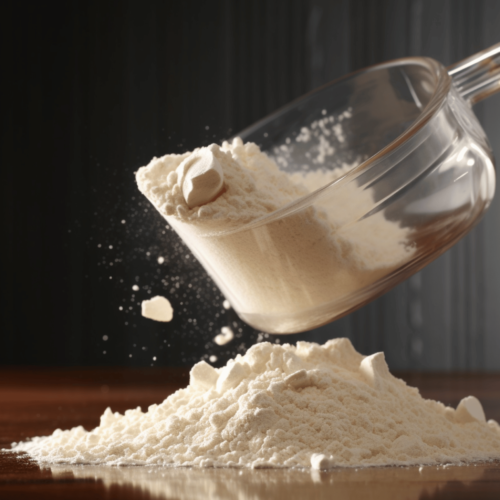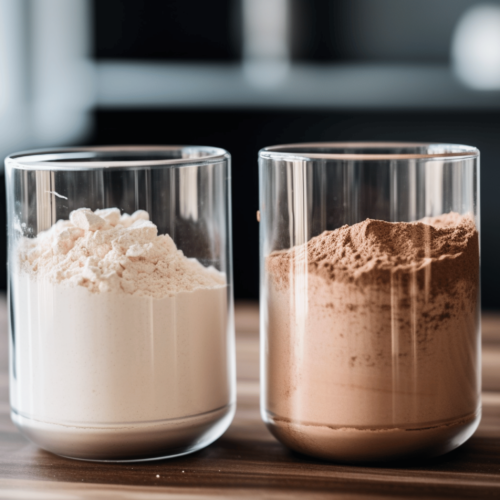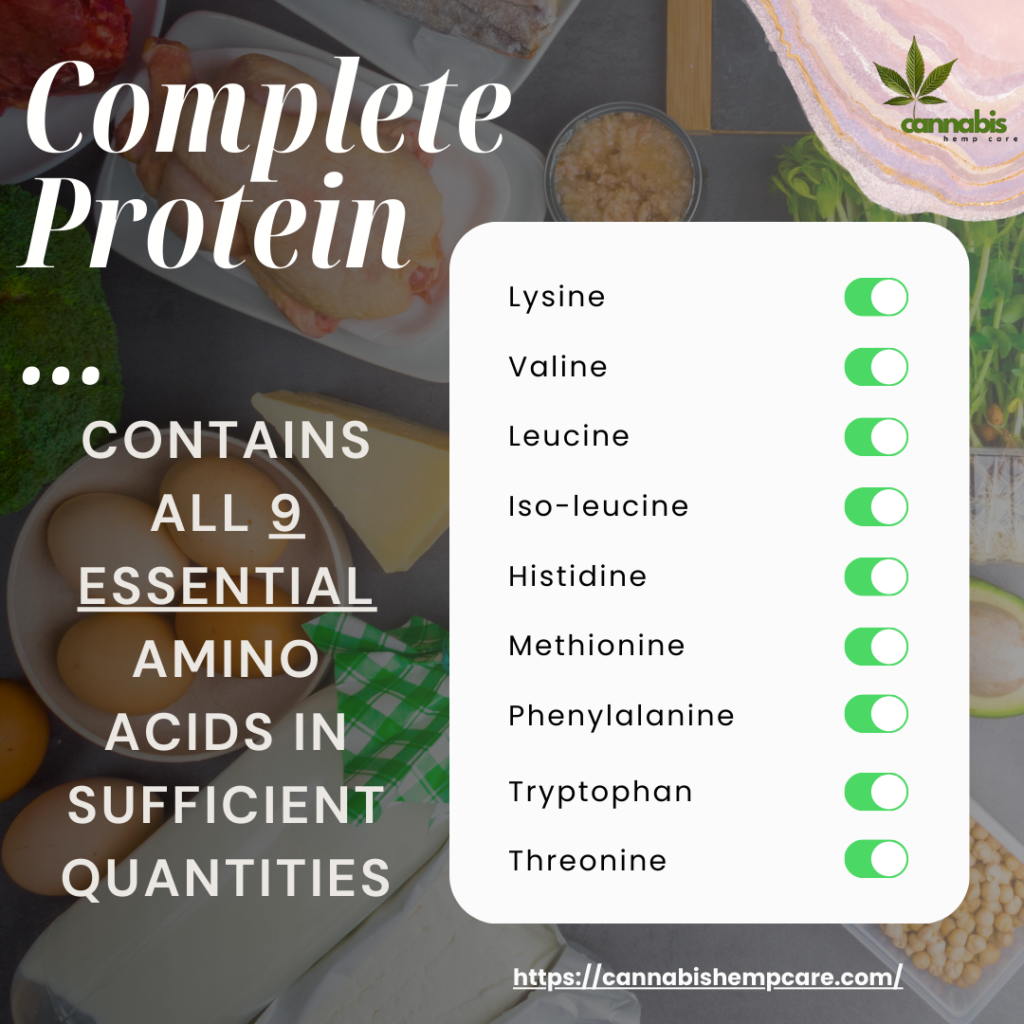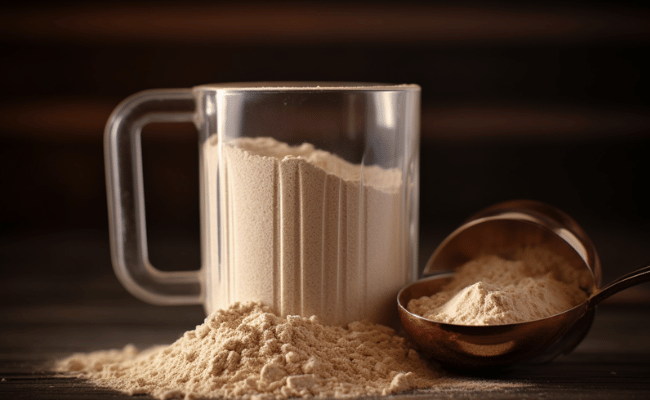Navigating the world of fitness supplements can be daunting, especially when you’re new to the journey. One of the most common questions posed by beginners is about protein powder. So, let’s dive in.
- Why Protein Matters
- How Much Do You Need Daily?
- Percentage of Calories from Protein?
- Is There Such a Thing as Too Much Protein?
- Understanding Complete Proteins and Essential Amino Acids
- Why Does a Complete Protein Matter?
- Best Times to Take Protein Powder
- Why is Timing Important?
- How to Use Protein Powder
- Conclusion
- FAQs
Why Protein Matters
Before we delve into the specifics, let’s address the basics: why is protein so essential?
- Muscle Growth: Protein is pivotal in repairing and building muscle tissues. After a rigorous workout, your muscles are like sponges, and protein helps repair the wear and tear.
- Body Maintenance: It’s not just about muscles. Protein plays a role in almost every cellular function in your body. It’s vital for hair, skin, bones, and even hormones.
How Much Do You Need Daily?
Daily protein intake is not one-size-fits-all. Here’s a basic breakdown:
- Average Adults: According to general recommendations, the average adult should aim for 0.8 grams of protein per kilogram of body weight.
- Active Individuals: If you’re more on the active side, doing resistance training or endurance sports, your need increases. The suggested range is 1.2-1.7 grams per kilogram of body weight.
Does this mean more protein always equals better results? Not exactly. Studies indicate that consuming over 2 grams of protein per pound of body weight doesn’t offer any additional benefits and might even be counterproductive.

Percentage of Calories from Protein?
For an easy calculation:
Protein has 4 calories per gram.
If an active individual weighing 175 lbs needs about 140 grams of protein daily, that’s 560 calories from protein. This would be about 25% of a typical 2,200-calorie diet.
Experts advise that anywhere from 10%-35% of your daily caloric intake can come from protein. But for muscle growth, targeting 20%-30% seems optimal.
Boosting Protein Intake: Top Tips
Choose Low-Fat Protein Sources: Options like lean meat cuts, egg whites, and low-fat dairy can give you protein without the excessive calories from fats.
Opt for Quality Protein Powders: Think of this as your protein safety net. Quality matters! Look for powders that offer a complete amino acid profile. Whey, pea, and brown rice are top choices. A fun fact: vegan-friendly options like VEG PRO can offer up to 20 grams of protein per serving.
Remember, Carbs Have Protein Too: Whole grains can be a surprising protein source. Think quinoa, brown rice, and sprouted grain bread.

Is There Such a Thing as Too Much Protein?
Here’s where science steps in. Research suggests the body can effectively use about 25 grams of protein in one meal to synthesize muscle. If you’re aiming for optimal intake, small, frequent protein-rich meals can help you achieve this.
Whey or Plant Protein: What’s the Difference?
Both are great, but they cater to different needs:
- Whey Protein: Derived from milk, it’s rich in branched-chain amino acids (BCAAs) – especially leucine, which is key for muscle growth.
- Plant Protein: Perfect for vegans or those with lactose intolerance. Sources like peas and brown rice are complete proteins, meaning they provide all the essential amino acids your body needs.

Understanding Complete Proteins and Essential Amino Acids
What are Amino Acids?
At its core, a protein is a complex molecule made up of amino acids, which are the building blocks of the body. There are 20 different amino acids that form proteins, and while the body can produce 11 of them, there are 9 essential amino acids that must be obtained from food or supplements.
What is a Complete Protein?
A complete protein contains all 9 essential amino acids in sufficient quantities. These essential amino acids include:
- Lysine: Important for proper growth and plays an essential role in the production of carnitine, a nutrient responsible for converting fatty acids into energy.
- Valine: One of three branched-chain amino acids, meaning it can be used as an energy source by muscle cells, and is involved in muscle growth and regeneration.
- Leucine: Another branched-chain amino acid, it stimulates muscle protein synthesis and is needed for muscle repair and maintenance.
- Iso-leucine: Also a branched-chain amino acid, it’s involved in muscle metabolism and is heavily concentrated in muscle tissue.
- Histidine: Needed for the production of histamine, a neurotransmitter that is vital for immune response, digestion, sexual function, and sleep-wake cycles.
- Methionine: Plays an important role in metabolism and detoxification. It’s also necessary for tissue growth.
- Phenylalanine: A precursor for the neurotransmitters tyrosine, dopamine, epinephrine, and norepinephrine.
- Tryptophan: Needed to maintain proper nitrogen balance and is a precursor for serotonin, a neurotransmitter that regulates appetite, sleep, mood, and pain.
- Threonine: Important for skin and connective tissue production. It also plays a role in fat metabolism and immune function.

Why Does a Complete Protein Matter?
A complete protein is vital for muscle repair, bone health, and maintaining healthy body tissues. These amino acids are not stored in the body and must be obtained through your diet every day. When you consume a complete protein, your body has all the building blocks it needs to repair and build tissues.
Best Times to Take Protein Powder
Now, let’s talk about the optimal times to take protein powder.
- Before and After Workouts: Consuming protein both before and after a workout can help increase muscle protein synthesis (the process of building new proteins). Before a workout, it can provide your muscles with the fuel they need. Post-workout, it helps repair and grow your muscles.
- As a Meal Replacement or Snack: If you’re on the go and don’t have time for a meal, a protein shake can be a good substitute. It can provide the nutrients your body needs to keep you fueled and prevent muscle breakdown.
Why is Timing Important?
Muscle protein synthesis is higher after resistance training. Therefore, consuming protein during your workout can maximize the muscle repair and growth process. However, it’s also important to spread your protein intake throughout the day for optimal absorption and utilization.
How to Use Protein Powder
- Shakes: The classic way. Mix with water, or for a creamier taste, try almond milk.
- Smoothies: Throw in some fruits and veggies with your protein powder for a nutritional punch.
- Recipes: Stir it into oatmeal, bake it into muffins, or even sprinkle on salads.

Conclusion
Complete proteins are crucial for maintaining and building healthy body tissues. While you can get these proteins from various food sources, protein powder is a convenient way to ensure you’re meeting your protein needs, especially around workouts. Just remember that it’s a supplement and should not replace whole foods entirely. Always aim for a balanced diet.
FAQs
Is 2 scoops of whey protein too much?
It depends on your individual needs, the specific product you’re using, and your overall protein intake from other sources. Generally, one scoop of whey protein powder provides about 20 to 25 grams of protein. The Recommended Dietary Allowance (RDA) for protein for an average adult is 46 grams per day for women and 56 grams for men. However, needs can be higher for active individuals, athletes, or those trying to gain muscle or lose weight. It’s essential to consider your total daily protein intake, including from food sources. If two scoops fit within your daily protein needs and don’t lead to excessive intake, it should be fine. However, it’s important to consult with a healthcare professional or a registered dietitian to determine your specific protein needs
Is whey protein safe for kidneys?
For most people with healthy kidneys, consuming a normal amount of protein (including whey) is safe. However, excessively high protein intake over a long period can put a strain on the kidneys, particularly if you have existing kidney problems. If you have kidney disease, a high-protein diet might worsen your condition. In such cases, it’s crucial to follow your healthcare provider’s dietary recommendations. Moderation is key.
What are the side effects of protein powder?
While protein powders can be a convenient source of protein, they’re not without potential side effects. Some people might experience digestive issues such as bloating, gas, and diarrhea, especially when consuming large amounts or if they are lactose intolerant (as whey and casein protein powders contain lactose). Some protein powders may also be high in added sugars, artificial sweeteners, or other additives that some individuals might be sensitive to. Rarely, protein powders could be contaminated with harmful substances. It’s important to choose a reputable brand, and if you experience any adverse effects, stop use and consult a healthcare professional.
Who shouldn’t take protein powder?
People with certain conditions should be cautious with protein powders:
Individuals with kidney disease: As mentioned, high protein intake can be harmful.
Those with lactose intolerance: They might react to whey or casein powders.
People with certain metabolic disorders that affect how they process amino acids.
Also, pregnant or breastfeeding women and children should consult a healthcare professional before using protein supplements.
How long is it safe to take protein powder?
If you’re healthy and don’t exceed your daily protein needs, you can safely use protein powder for an extended period. However, it’s important to remember that it’s best to get most of your nutrients, including protein, from whole foods. Protein powders should not be a substitute for a balanced diet. If you’re unsure about your protein needs or long-term use of protein powder, it’s always a good idea to consult a healthcare professional.




































